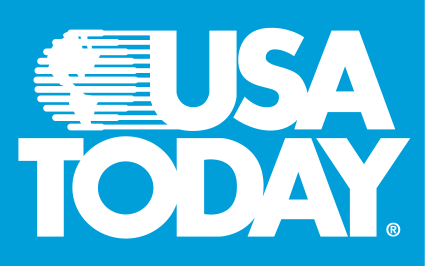AARP Eye Center
Al Neuharth: 5 Ways USA Today's Founder Changed the Newspaper
By Patrick Kiger, April 21, 2013 07:15 PM
There are two schools of thought about USA Today founder Al Neuharth, who died on April 19 at age 89 in Cocoa Beach, Fla. Some think he helped ruin the newspaper, an institution older than our country itself, by turning it into a paper-and-ink imitation of TV news. Others think he helped modernized a desperately outdated medium and, in so doing, perhaps staved off its demise.

Either way you choose to look at it, though, the former Gannett CEO was a brash, daring innovator, a leader who liked to rattle cages and cared more about being successful than being liked - as evidenced by the title of his 1989 memoir-business advice book, Confessions of an S.O.B. (As a Neuharth aide once explained to Los Angeles Times media critic David Shaw, "He's the sort of man who would go after Moby Dick with a rowboat, a harpoon and a jar of tartar sauce.") In 1982, at a time when daily newspapers across the United States were folding, he launched his brainchild: a national daily that featured bright, splashy color graphics and tightly written articles that emulated the brevity of TV news and was replete with sunny, upbeat trivia about what "we" across the nation were doing in our daily lives.
Journalism's traditionalists generally hated USA Today , branding it "McPaper." While Neuharth's experimental publication took years to become profitable, it quickly built a devoted readership, particularly among East Coast sports fans who liked getting late game scores from the West Coast and travelers who appreciated the daily digest of news in all 50 states. USA Today now ranks as the nation's second-biggest newspaper in circulation, with 1.7 million readers, ahead of the venerable New York Times and surpassed only by the Wall Street Journal.
Here are five of the innovations that Neuharth brought to the newspaper business:
- He was the first to use polling data to design a newspaper. As Neuharth told authors Gerald C. Gardner and Jim Bellows, he hired Lou Harris - the pollster who had helped John F. Kennedy win the presidency in 1960 - to help him figure out how to attract readers. It was Harris who told Gannett's board of directors that "the television generation simply is not going to fight its way through dull, grey newspapers, no matter how good they are." Neuharth came to rely on Harris so much that Gannett actually purchased his polling firm.
- He changed the newspaper box. USA Today, which aimed to reverse newspapers' costly dependence on delivering the paper to subscribers' doorsteps, made a big splash with its innovative vending machine, which critics couldn't help but note looked a lot like a TV set.
- He broadened the definition of news. As his New York Times obituary notes, Neuharth emphasized lifestyle coverage and pushed his paper to cover cultural trends and health and consumer issues. "We give the readers what they want, because we are in the business of selling news," he explained in 1979.
- He filled newspapers with data. Neuharth pioneered the use of charts and graphs filled with statistical information to tell stories, a device that's been widely copied by other newspapers.
- He taught journalists to accentuate the positive. According to USA Today managing editor Peter Prichard's book-length history of the paper, Neuharth took to heart survey results in which readers complained about how the news was too depressing. To counter that, he championed what he called the "new journalism of hope." Thus, even a USA Today headline on a plane crash searched for the bright side: "Miracle: 327 survive, 55 die."
Here's a video portrait of Neuharth:
Also of Interest
- Richie Havens: 10 Facts About the Woodstock Legend
- Best All Around Exercise for Every Post-50 Body
- Join AARP: Savings, resources and news for your well-being
See the AARP home page for deals, savings tips, trivia and more























































